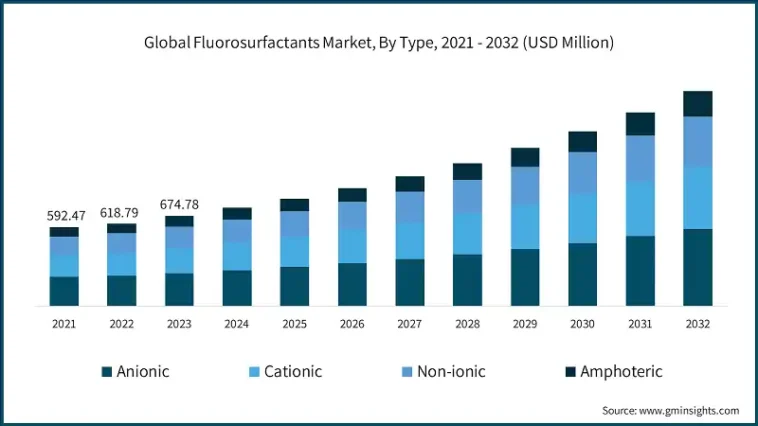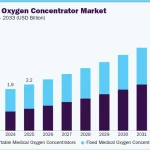
Green Chemistry in the Fluorosurfactants Landscape
The fluorosurfactants market has evolved into a complex yet exciting arena where technology, sustainability, and ever-changing industrial demands meet. As companies focus on process innovations and cleaner production methods, the interplay of high performance and eco-conscious development becomes increasingly critical. This opinion piece takes a closer look at the current state of fluorosurfactants, examining their benefits, the challenges they face, and the potential for future growth. In doing so, we get into the fine points of sustainable chemical production while also assessing the tangled issues that accompany stringent environmental standards.
Fluorosurfactants, known for their ability to lower surface tension and enhance a material’s wetting and leveling properties, have found their way into a variety of applications—from automotive coatings and electronics to oil and gas as well as firefighting foams. Their performance benefits make them indispensable in sectors where quality and durability are key. However, the push toward greener innovations coupled with a global focus on reducing environmental impact has forced companies to rethink traditional manufacturing methods.
Advancing Eco-Friendly Fluorosurfactant Innovations
One of the most critical trends in the fluorosurfactants market today is the increasing emphasis on green chemistry. Driven by growing regulatory pressures and consumer demand for sustainable products, manufacturers are actively investing in research and development to come up with eco-friendly alternatives that balance performance with a lower environmental footprint.
Recent breakthroughs have led to the development of next-generation fluorosurfactants, which boast several improved properties such as lower global warming potency and enhanced biodegradability. Innovations in polymeric fluorosurfactant chemistry are combining multiple functions into a single additive, eliminating some of the confusing bits of multi-component systems and simplifying formulations. These new chemistries not only deliver better performance but also reduce the ecological impact, making them super important for companies aiming to thrive in a green marketplace.
Key Drivers Behind the Move Toward Sustainable Production
A few factors are driving the trend toward eco-friendly fluorosurfactant formulations. For one, overlapping and sometimes nerve-racking environmental regulations worldwide push companies to shift away from traditional long-chain PFAS chemicals that tend to persist in the environment. Additionally, the adoption of such greener alternatives is being accelerated by rising consumer awareness about sustainability and cleaner production processes. The combination of these drivers has sparked a high level of innovation in the sector.
- Regulatory pressures: Stringent standards require companies to invest in R&D for cleaner alternatives.
- Consumer demand: An increasing number of buyers are seeking eco-friendly products that perform well.
- Cost benefits: Despite the high production costs, long-term savings from sustainable practices justify the investment.
Industry Innovations in Fluorosurfactants for High-Performance Paints
Among the many applications of fluorosurfactants, their role in paints and coatings stands out. In many sectors, particularly in automotive and architectural applications, achieving flawless surface finishes is a super important goal. Manufacturers use fluorosurfactants to improve wetting, enhance leveling, and increase the durability of coatings. This is particularly critical where smooth, shiny, and resistant surfaces are required.
The benefits of these advanced formulations are readily observable. For example, in automotive paints, fluorosurfactants help achieve a balance between gloss and weather resistance, ensuring that vehicles not only look good but also stand up to the elements. Meanwhile, in industrial settings, the increased adhesion and resistance properties provided by these surfactants improve the overall performance of adhesives and sealants used in sophisticated engineering applications.
The Role of Advanced Formulations in Automotive Coatings
Automotive coatings require formulations that deliver both aesthetics and functionality. Here, fluorosurfactants contribute the following advantages:
- Enhanced wetting: These chemicals help ensure even pigment distribution for a uniform finish.
- Improved leveling: They create smooth films which reduce imperfections and enhance the visual appeal.
- Increased durability: The coatings resist abrasion and weathering, which is critical for long-term performance.
Manufacturers are continuously refining these formulations to cope with the twists and turns of modern consumer expectations and industrial demands. With companies like 3M and The Chemours Company at the forefront, the sector has witnessed substantial technological progress that not only meets high-performance requirements but also aligns with greener production methods.
Regulatory Challenges and Opportunities for Surfactant Companies
One of the trickier parts of the fluorosurfactants market is dealing with the stringent environmental regulations that many countries have put in place. These regulations, often complex pieces of legislation aimed at curbing environmental degradation, place the industry in a position where it must both innovate and comply at the same time.
Legislative frameworks vary significantly from one region to another. For instance, the European market has a heightened focus on reducing bioaccumulation and chemical persistence, while North American standards may allow more leeway in certain applications. This regional variance creates both opportunities and challenges for manufacturers who need to figure a path through a maze of rules and expectations.
Dealing with Tricky Parts and Tangled Issues in Environmental Regulation
Regulatory compliance brings several intimidating and nerve-racking challenges:
- Research and development costs: Developing new, sustainable formulations is expensive and requires significant investment.
- Testing and certification hurdles: New formulations must undergo rigorous testing to meet environmental standards, which can delay market entry.
- Variable global standards: What works under one regulatory regime might not pass muster in another region, requiring multiple product lines or formulations.
Despite these obstacles, robust regulatory frameworks have the unintended benefit of fostering innovation by pushing companies to devise cleaner and more efficient production methods. The competition among legacy chemical titans and emerging green startups is leading to creative solutions that not only comply with stringent rules but also cater to consumer demand.
Eco-Friendly Surfactants: Balancing Performance with Sustainability
Another area where fluorosurfactants are making significant strides is in the realm of eco-friendly formulations. In response to growing environmental concerns, companies are dabbling in greener production techniques that offer the performance benefits of traditional formulations while reducing harmful ecological impacts.
The development of shorter-chain and bio-based fluorosurfactants aims to resolve issues related to persistence and toxicity. These advances help maintain the high-performance characteristics—like improved surface tension reduction and enhanced chemical resistance—while offering a more sustainable profile. In industries such as personal care, electronics, and specialty detergents, there is a discernible pivot towards formulations that balance effectiveness with environmental responsibility.
Exploring Greener Alternatives in Production Techniques
The journey to create greener surfactants involves several critical steps:
- Advanced microbial fermentation: Companies like Ecovia use biological processes to produce high-value chemicals from sustainable resources, offering an environmentally friendly alternative to traditional synthetic routes.
- Bio-based feedstocks: Shifting towards renewable resources helps reduce dependence on fossil fuels and lowers the overall carbon footprint of production.
- Clean production methods: Process innovations ensure that the production itself is less energy-intensive and minimizes hazardous waste, thereby lowering the environmental burden.
These greener routes are not only crucial for addressing environmental concerns but also play a significant role in securing long-term market growth. As consumer preferences shift towards eco-friendly products, the adoption of sustainable fluorosurfactants could prove to be a game-changer in multiple industrial markets.
Regional Market Leaders and Their Strategies
The global fluorosurfactants market is a diverse and segmented landscape. Each region carries its own set of advantages and challenges, influenced by local regulations, industrial demands, and market maturity. A comparative analysis of North America, Europe, and Asia-Pacific reveals different strategies and market dynamics that are worth a closer look.
North America, for example, stands out due to its robust industrial base and high consumer disposable income. Here, companies have successfully found their way through intricate regulatory terrain by focusing on high-performance applications in automotive, electronics, and oil and gas. In Europe, meanwhile, the primary focus lies in sustainability. Strict environmental regulations have spurred European companies to adopt greener practices in the production of fluorosurfactants, driving demand for eco-friendly solutions in industries like construction and consumer goods.
North America, Europe, and Asia-Pacific – A Comparative Analysis
A side-by-side look at the market dynamics in these regions reveals some interesting contrasts:
| Region | Key Industries | Regulatory Environment | Main Driver |
|---|---|---|---|
| North America | Automotive, Electronics, Oil & Gas | Moderately strict with a focus on innovation | High consumer demand for premium products |
| Europe | Construction, Consumer Goods, Automotive | Highly strict and focused on sustainability | Sustainability and environmental safety |
| Asia-Pacific | Electronics, Textiles, Oil & Gas | Evolving regulations with increasing pressure | Rapid industrial growth and urbanization |
In the Asia-Pacific region, rapid industrialization and urbanization are fueling demand for high-performance fluorosurfactants. As countries like China, Japan, and South Korea continue to expand their manufacturing and technology sectors, the need for surfactants that can deliver superior performance while coping with challenging environmental conditions grows stronger. Companies invested in R&D are increasingly tailoring their offerings to meet these regional requirements, signaling a promising outlook for the near future.
Technological Breakthroughs and Future Trends in Fluorosurfactants
Technological advancements continue to drive the evolution of fluorosurfactants. Ongoing research into new chemical formulations, enhanced production methods, and innovative applications is reshaping the market landscape. With increased investment in R&D, companies are exploring ways to integrate multifunctionality into single additives—alleviating some of the complicated pieces involved in traditional formulations.
One current trend is the development of polymeric fluorosurfactants that offer enhanced stability and surface activity. These new formulations are designed to provide better performance across a range of industrial applications without adding extra production steps. The introduction of these breakthrough technologies stands as a prime example of how the industry is steering through challenges to meet both market demand and regulatory hurdles.
From Research to Market Penetration: Fine Points of Product Development
The journey from concept to market-ready product in the fluorosurfactant arena is paved with several critical phases. Companies must carefully manage the small distinctions of complex chemistry while also considering cost-effectiveness and environmental safety. The process usually involves:
- Initial research and development: Conducting feasibility studies and lab tests to refine the chemical composition.
- Field validation: Testing the product in real-life industrial settings to assess performance under diverse conditions.
- Regulatory compliance: Getting the necessary certifications and approvals from relevant authorities, which can be nerve-racking but essential.
- Market scaling: Transitioning from pilot production to mass manufacturing while ensuring quality control.
This pathway, though loaded with issues, is critical in ensuring that the end product not only performs well but also meets enhanced sustainability criteria. With increased competition from both legacy firms and nimble startups, the pressure to innovate has never been higher. The drive to reconcile performance with environmental responsibility is one of the key mysteries that companies are continuously trying to solve.
Economic and Business Implications in Today’s Market
The growth of the fluorosurfactants market promises far-reaching economic benefits for the industries that rely on high-performance surfactants. As businesses embrace greener options, they are able to increase their operational efficiencies while ensuring compliance with increasingly strict environmental guidelines.
Investments in the sector are not solely about staying ahead technologically; they also represent a strategic move to boost economic resilience amid fluctuating market conditions. For instance, as infrastructure projects and industrial upgrades accelerate, demanding sectors such as automotive manufacturing and electronic production are geared up for long-term growth. This trend, in turn, creates a ripple effect that spurs further R&D investments and market expansions—helping companies to find their path in a tense global market.
The Business Case for Investing in Sustainable Fluorosurfactants
Companies looking to excel in the competitive landscape should consider several critical advantages of investing in eco-friendly fluorosurfactant technologies. Among these are:
- Improved product performance: Enhanced coatings and adhesives that offer better wetting, adhesion, and durability.
- Regulatory advantages: Early adoption of sustainable technologies can lead to smoother compliance and reduce the costs linked with future environmental measures.
- Market differentiation: Brands that emphasize green chemistry can position themselves as leaders in sustainability, attracting conscious consumers and premium market segments.
- Long-term cost savings: Though initial production costs can be high, the overall benefits of efficient production and lower environmental fees may lead to cost reductions over time.
The combination of these factors underlines a solid business case for companies that are ready to take the wheel in this evolving industry. By embracing both the high-performance and eco-friendly aspects of fluorosurfactants, businesses can secure a competitive edge while contributing to a cleaner environment.
Balancing Technical Performance Against Production Costs
While the market for fluorosurfactants is ripe with potential, it is important to acknowledge that high production costs remain a significant barrier. The sophisticated manufacturing processes and the use of premium raw materials drive up the overall expense of these chemicals. However, many industry insiders view this as only one side of an increasingly diverse economic equation.
Companies are now addressing these cost-related challenges by seeking innovative processing methods, engaging in strategic collaborations, and exploring economies of scale. For example, partnerships between established chemical titans and innovative startups are yielding remarkable results by combining experience with cutting-edge research. This collaborative approach is helping to lower the cost by sharing knowledge, technology, and even manufacturing capacity.
Strategies to Alleviate High Production Costs
Here are some strategies businesses are using to reduce the high production cost associated with fluorosurfactant manufacturing:
- Collaborative R&D: Joint research initiatives between large corporations and innovative startups can spread the risk and cost of developing new technologies.
- Process automation: Investing in automated and efficient production processes helps improve yield and lower unit costs.
- Supply chain optimization: Streamlining raw material procurement and logistics plays a significant role in reducing the overall production expense.
- Government incentives: Leveraging subsidies and tax breaks aimed at promoting sustainable manufacturing can also help mitigate some of the cost issues.
By taking these steps, companies are better equipped to tackle the complicated pieces inherent in manufacturing high-quality fluorosurfactants. This proactive approach not only ensures compliance with environmental standards but also supports robust market growth despite the inherent production cost challenges.
Conclusion: Driving Down the Expenses and Nailing Sustainable Growth
The fluorosurfactants market stands at the crossroads of performance-driven innovation and a determined shift toward sustainability. As companies continue to face the nerve-racking and intimidating demands of global regulations, the drive to develop eco-friendly formulations remains a key focus. The market is poised for growth, buoyed by technological breakthroughs and a collective commitment to finding greener production methods.
On one hand, there is tremendous promise in leveraging these advanced chemicals to deliver enhanced industrial coatings, high-performance adhesives, and better cleaning agents. On the other hand, the sector must contend with high production costs, regulatory hurdles, and the challenging task of striking the right balance between performance and environmental safety. Despite these tricky parts and tangled issues, the drive for innovation continues to reward those who can merge performance enhancement with sustainable practices.
Ultimately, the interplay between regulatory compliance, technical performance, and sustainable practices will determine the long-term success of companies operating in this space. The industry must keep its eye on both immediate market demands and the long-term global trend toward a greener, cleaner production landscape. In this sense, forward-thinking companies that dare to invest in research, collaborate across sectors, and harness the potential of eco-friendly fluorosurfactants are poised to redefine industry standards and secure a lasting competitive edge.
Finding the Path Ahead in a Tense Global Market
In conclusion, the future of fluorosurfactants depends largely on the ability of businesses to work through the tricky parts of production cost and regulatory challenges while not sacrificing efficacy. With strong industrial demand across sectors such as automotive, electronics, construction, and oil and gas, it is clear that the role of fluorosurfactants is becoming increasingly critical.
While the market continues to be loaded with issues—ranging from the high costs of production to the nerve-racking demands of environmental compliance—the potential payoff is significant. For companies that are ready to dig into the nitty-gritty of sustainable innovation, the rewards are not just limited to enhanced performance but also to a stronger market position in a globally tense and competitive landscape.
By aligning strategic investments with green innovations, and by making thoughtful, informed choices that take into account both the environmental and economic aspects of production, industry leaders can secure a prosperous future. After all, in today’s market, the ability to merge high performance with sustainability is not just advantageous—it is a must-have ingredient for long-term success.
As we move forward, it is essential for stakeholders across the board—from manufacturers and chemical titans to agile startups—to continue collaborating and sharing insights. Only by working together and taking the wheel can we truly marshal the forces needed to steer through the confusing bits and tangled issues of today’s production challenges, paving the way for a greener, more productive tomorrow.
Originally Post From https://www.skyquestt.com/report/fluorosurfactants-market
Read more about this topic at
Fluorosurfactant Market Size, Share & Growth Report [2032]
Fluorosurfactant Market Size, Share & Growth Report, 2030


